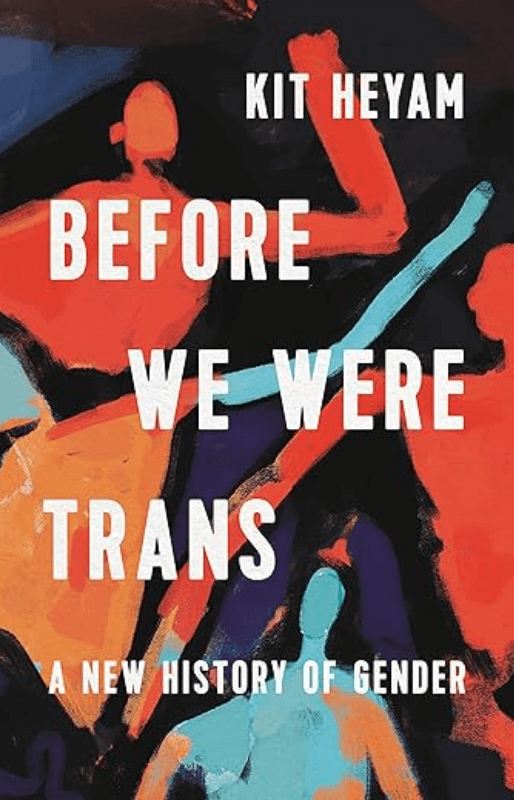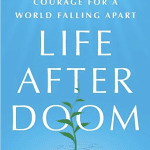Back in 1994, the Canadian alternative rock band Barenaked Ladies released a song titled “What A Good Boy.” The opening lyrics went like this:
When I was born, they looked at me and said
“What a good boy, what a smart boy, what a strong boy”
And when you were born, they looked at you and said
“What a good girl, what a smart girl, what a pretty girl”
We’ve got these chains hanging around our necks
People want to strangle us with them
Before we take our first breath
The song is right: there are social constructions around gender that we are born into. And especially for anyone whose gender identity differs from the gender conventions their society assigned them at birth, such limiting and restrictive normative societal constructions can be deeply harmful.
As the parent of a nine-month-old, I don’t want to offend anyone who has asked me the question I’m about to name, but I do want to reframe it for today’s Transgender Day of Visibility. Often the first question people ask me about our child is, “Is it a boy or a girl?” On the one hand, I truly understand the motivation behind that question. On the other hand, part of me wants to respond, “Why are you so interested in my baby’s genitals?!” I mean, for real! Why do we feel like we need to know? A gentler response that I’ve heard suggested is for new parents to say, “We don’t know. Maybe one day our child will tell us.”
March 31 is International Transgender Day of Visibility, an annual event dedicated to celebrating transgender people and raising awareness of discrimination faced by transgender people worldwide, as well as a celebration of their contributions to society. In 2021, President Biden became the first U.S. president to officially recognize Transgender Day of Visibility. And he called upon “all Americans to join in the fight for full equality for all transgender people.”
Defending transgender rights feels particularly urgent these days. In the words of the Executive Director of PFLAG (the first and largest organization dedicated to supporting, educating, and advocating for LGBTQ+ people and their families):
Hundreds of bills across dozens of states are seeking to harm transgender and nonbinary kids and their families. Bills that, if passed, would prevent access to gender-affirming healthcare, prevent trans kids from joining their friends in playing on sports teams, and deny them access to bathrooms and locker-rooms. Bills that could criminalize their parents for making informed, loving, and very private decisions. Still other bills are working to prevent even the mention of gender identity or sexual orientation in the classroom….
In truth, no amount of legislation can erase the authentic identities and lives of our trans and nonbinary loved ones; it can only serve to make trans and nonbinary people more vulnerable to harm as they simply try to live their lives. (Gillespie xi-xii)
 One of the books I’ve been reading in preparation for this Transgender Day of Visibili ty is Before We Were Trans: A New History of Gender by Dr. Kit Heyam, who uses both they/them and he/him pronouns. They are interested in both deepening and widening how transgender history is told. Our modern understanding of the term “transgender” dates back only to the early twentieth century, but we know that countless people throughout history have experienced life as what we today call transgender (3).
One of the books I’ve been reading in preparation for this Transgender Day of Visibili ty is Before We Were Trans: A New History of Gender by Dr. Kit Heyam, who uses both they/them and he/him pronouns. They are interested in both deepening and widening how transgender history is told. Our modern understanding of the term “transgender” dates back only to the early twentieth century, but we know that countless people throughout history have experienced life as what we today call transgender (3).
The basic claims of the transgender experience seem self-evidently true to me: that we’re all somewhere on a broad spectrum of gender. Our human sexual and gendered identities are simply a lot messier, more interesting, and more complicated than can be contained in the simplistic traditional gender binary of either male or female (8).
In Heyam’s words describing their own experience:
If I played professional sports, my testosterone levels would make me a ‘man’; if I got pregnant, my doctor’s computer system would force me to be labelled ‘woman.’ If you asked me, I’d tell you neither category is accurate — instead, I use the term ‘non-binary’ to describe myself…. (7)
Heyam shares further that, “My own dress also both reflects and reshapes my gender.” This example is part of what the philosopher Judith Butler meant when she famously described gender as a “performance.” More specifically, Heyam says:
sometimes it’s the case that I put on jewelry and a bright, fitted cardigan because I’m feeling less male and more non-binary on that particular morning, but sometimes the reverse is true. Both kinds of gendered experience are equally true for me: my gender isn’t less authentic because a pair of dangly earrings can change how it feels. (90)
Their book includes lots of historical examples. Some are among the most well-known historical examples:
- Billy Tipton – the American jazz musician who lived as male and whose family and friends were shocked when he was outed as trans after his death in 1989.
- James Barry – the Irish surgeon who similarly lived a male for all of his adult life, and was outed against his will after his death in 1865.
- Lile Elbe – the Danish trans woman who was one of the earliest recipients of a modern Western form of gender reassignment surgery, and
- Christine Jorgensen – who was made famous by the 1952 New York Daily News headline, “EX-GI BECOMES BLONDE BEAUTY.” (8)
These examples and many other prominent transgender stories from history are significant. But let me give you one provocative example of what Heyam meant by “a new history of gender.” They are interested in shining a spotlight on previously unrecognized examples of possible transgender ancestors.
Let’s turn back the clock 177 years to 1847 and hop the pond over to London where, one night in early June, a twenty-two-year-old John Sullivan was stumbling drunkenly down a street wearing a bonnet, gown, silk apron, a pair of trousers, and a pair of women’s boots. He was carrying a bag with more items of women’s clothing in it.
He claimed it was all a big joke, and blamed it on his poor decision-making while intoxicated. He was put on trial for stealing the clothes, and given the outrageous sentence of being sent to a penal colony in Australia for ten years. Heyam challenges us to consider: “Is this story part of trans history” (1)? Ultimately, we don’t have enough information to know with any certainty how Sullivan identified, but I appreciate Heyam’s interest in reading between the lines and looking for transgender precedents during many different, previously-unexplored areas (28).
That being said, I don’t want to focus too much on the past to the neglect of the present. To that end, a second book I’ve been reading in the lead-up to our International Transgender Day of Visibility is Authentic Selves: Celebrating Trans and Nonbinary People and Their Families by Peggy Gillespie, published by Skinner House Books, which is part of our own Unitarian Universalist Association. The book is a beautiful collection of interviews, and I’ll have to limit myself to sharing with you only five brief quotes. If these leave you curious to learn more, I recommend the book. In the spirit of our celebration of Transgender Day of Visibility, these photos and quotes will help you hear more directly from people speaking for themselves about how life-affirming coming out as transgender has been for them.
First, meet Angelle. She says, “I am still transitioning. I’m happier than I could’ve possibily imagined in my wildest dreams. Every day I wake up and I’m more myself than ever before” (11). Her mother echoes these sentiments: “What a gift I have been given these last few years to truly get to know my daughter, the real Angelle!” (16). Similarly, her brother shares that, “Angelle has a certain twinkle to her eyes that not all people have…. Often, back before she came out as trans, that spark wasn’t in her eye (20).
Next, meet Josef, a physician associate. He shares, “In the seven years since I came out as a trans man, I have experienced a lifetime of change…. I’ve felt gender euphoria — the opposite of gender dysmorphia! My wishes and prayers from fifty years earlier when I was a child were answered by medical science and perseverance. It has all been worth the wait, the challenges, and the mysteries!” (45)
Anna is a deputy sheriff. She shares that, “My county must have spent a million dollars already fighting against covering trans health care. I just can’t believe that they’ve been willing to spend that much money when they said that finances was one of the main reasons they denied my claim. They’ve spent far more defending their case than it would have cost them to cover my surgery.”
Sarah McBride was elected in 2020 to the Delaware State Senate, making her the first openly transgender state senator in the country. This year she is a candidate for Delaware’s at-large congressional district. If elected, she would be the first openly transgender member of Congress. In her words, “If your child is coming out as trans or nonbinary, not only has your child probably been struggling with who they are for a long time, they’ve kept this knowledge inside for a long time. They need your support and love” (69).
Finally, Ben is a medical student. He shares, “I made a conscious effort to be very upfront about my gender transition from female to male in medical school because a lot of trans people in my community say that they haven’t really been treated well by the medical system. I wanted to expose the next generation of doctors to what it means to be a trans person and to the fact that we are deserving of respect and good care” (97).
In the words of my colleague The Rev. Dr. Maureen Killoran, “Whoever you are, wherever you come from, wherever you are on your journey, however you identify, whomever you love, you are welcome here.” That’s the kind of world, with love at the center, that we are seeking to build together for ourselves, for our children, and for our children’s children. And I’m grateful to be on that journey with many of you — of co-creating a more egalitarian and gender-liberated world, where anyone can express their gender in any way their heart desires.













